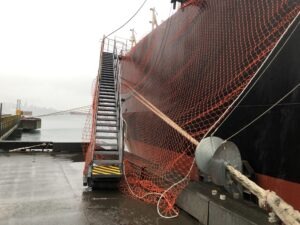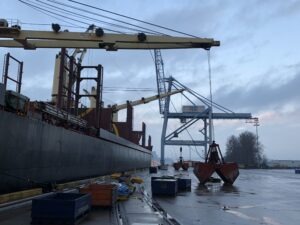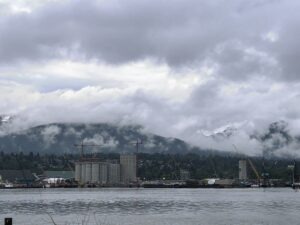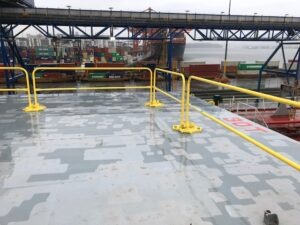Longshoremen And Employers Reach Tentative Deal

After several weeks of on again off again work stoppages and union strike notices declared then rescinded which created uncertainty and frustration across the industry, we now seem to be on the verge of a negotiated labour settlement for Western Canadian ports.
On July 30, the International Longshore and Warehouse Union Canada (ILWU Canada) and the BC Maritime Employers Association (BCMEA) announced they had reached a tentative, negotiated collective agreement. The ILWU membership is now expected to have their official vote for the contract offer on August 3 and August 4.
Full details of the agreement are yet to be released but it is expected to be a four year deal.
A little over two weeks ago, on July 13, the ILWU negotiators had endorsed a similar offer that appeared to have ended the 15 day strike, but in a surprising turn the 70-member leadership caucus subsequently reviewed and rejected the proposed deal.
Confusion ensued as the ILWU walked back out on strike only for the Canadian Industrial Relations Board to order them back to work the following day for failing to deliver a fresh 72 hour strike notice after tentatively agreeing to the deal. The union promptly issued the new strike notice, only to rescind it several hours later. A general vote was then announced for July 27, at which time the proposal was rejected by the membership.
Finally, under the looming threat of government mandated binding arbitration, the latest agreement was reached three days later on July 30.
The final sticking point that created this uncertainty over the last week was reported to have been the wording in the provision that “normal” maintenance work on terminal equipment would continue to be done by ILWU union members. The ILWU caucus reportedly felt the use of “normal” was too vague and would eventually lead to terminals using outside contractors resulting in the loss of ILWU maintenance jobs.
Lets just hope there are no more last minute surprises.
Time line of events:
Feb 16 – Negotiations begin between the ILWU and the BCMEA
Mar 31 – The existing collective agreement between the BCMEA and the ILWU expires.
Jun 05 – The ILWU’s negotiating committee authorizes a strike vote to be conducted on June 9 and 10.
Jun 12 – The ILWU says members voted 99.24 per cent in favour of supporting strike action if necessary.
Jun 28 – The ILWU serves 72-hour strike notice.
Jul 01 – Strike commences at B.C. ports, shutting down operations at most of the province’s marine terminals.
Jul 11 – Canadian government asks a mediator to draft terms for a potential settlement agreement.
Jul 13 – The BCMEA announces a tentative, four-year agreement has been reached with the ILWU. Port operations resume.
Jul 18 – The ILWU announces its leadership caucus voted down the mediator’s terms, and workers are back on strike. Picket lines resume
Jul 19 – The Canada Industrial Relations Board rules the ILWU’s move to strike on July 18 was unlawful because no 72-hour notice was provided.
Jul 19 – The ILWU issues a new 72-hour notice to strike and rescinds the notice hours later.
Jul 20 – The ILWU’s leadership announces it is recommending the agreement and it will be put to a vote.
Jul 28 – ILWU members vote on the agreement.
Jul 28 – ILWU announces that its members have voted to reject the agreement.
Jul 30 – The ILWU and the BCMEA release a joint statement announcing they have reached a new tentative agreement, with leaders of both sides recommending ratification to their members. The industrial relations board orders that the union vote no later than Aug. 4







